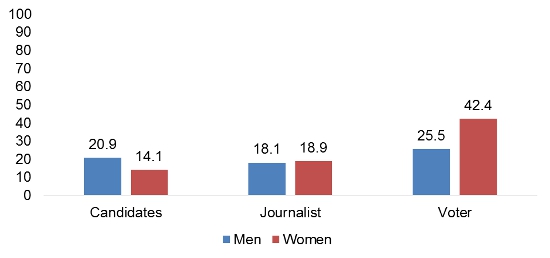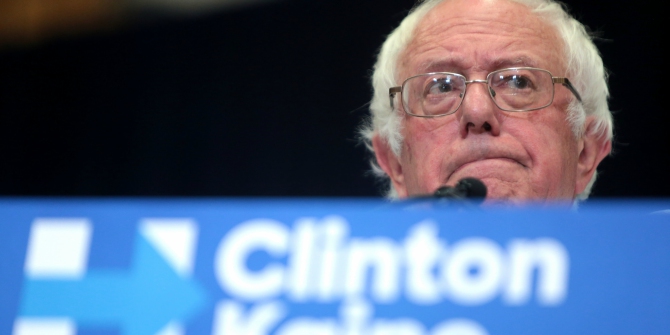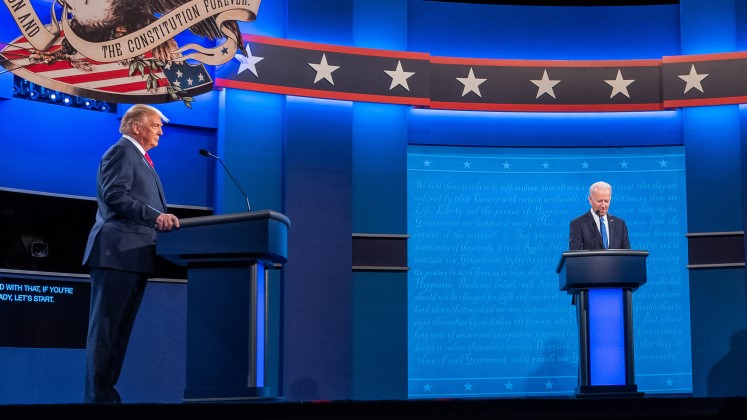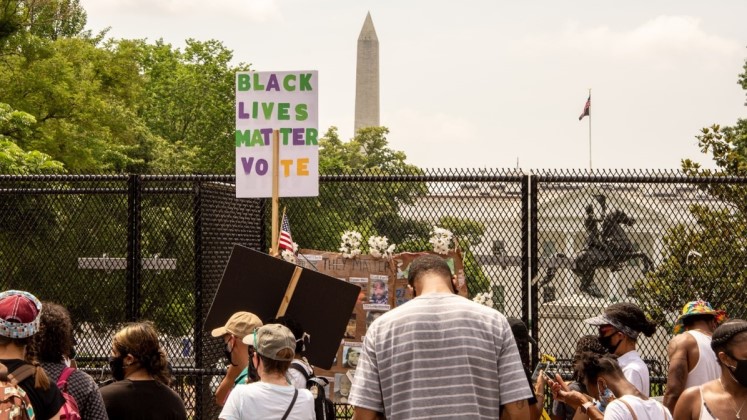
 Electoral debates can greatly influence the issue priorities of the public through the media’s agenda-setting function; however, debates have not always reflected the issue priorities of the public. As more women seek public office, little is known about gender’s role in shaping debate agendas. In new research examining questions from US presidential debates, Jason Turcotte and Newly Paul find that although female voters participating in debates refocus the agenda toward issues of greater consequence to women, female candidates and journalists fail to increase the emphasis on women’s issues. The implications of this mean that women’s issues are often muted in debates, and the presence of female candidates and journalists does little to foster greater diversity in issue focus.
Electoral debates can greatly influence the issue priorities of the public through the media’s agenda-setting function; however, debates have not always reflected the issue priorities of the public. As more women seek public office, little is known about gender’s role in shaping debate agendas. In new research examining questions from US presidential debates, Jason Turcotte and Newly Paul find that although female voters participating in debates refocus the agenda toward issues of greater consequence to women, female candidates and journalists fail to increase the emphasis on women’s issues. The implications of this mean that women’s issues are often muted in debates, and the presence of female candidates and journalists does little to foster greater diversity in issue focus.
The 2012 elections brought 20 female senators – the most in US history – to Congress, and Hillary Clinton and Carly Fiorina now aim to crack the highest ceiling in the male-dominated domain of politics. Nonetheless, these advancements may signal symbolic progress rather than a political arena that is more inclusive of women. Although men and women voters hold some distinctions in issue priorities that are uniquely tied to gender, the presence of female candidates and journalists in debates falls short in diversifying agendas to emphasize issues mattering most to women.
In the male-dominated arena of presidential politics, female candidates are often treated as novelties. The media cover their candidacy through the lens of gender norms and stereotypes that make it difficult to attain fair treatment. Female journalists face similar obstacles to gain respect in the male-dominated news business. To remain successful in these institutions, women must deemphasize or altogether abandon their gender identity.
Scholars often divide policy issues into two groups—those that have direct relevance to women (termed manifest issues), and those where the connection is tangential (termed latent issues). Manifest issues include topics such as abortion and the wage gap, which are of direct consequence to women, while latent issues include broader topics such as education, healthcare, and social services. In the context of debates, female voters are far more likely to show concern for the more indirect latent women’s issues, whereas female journalists are more likely to emphasize manifest issues in the rare instances that they address the priorities of women. The polarizing nature of manifest issues often fits better with the conflict value of newsworthiness that journalists are trained to prioritize. In short, the issues that seem to matter most to women participating in debates are unlikely to be addressed by female journalists.
In our recent study, a team of research assistants analyzed 932 debate questions, including all questions asked in general election debates from 1960-2012 and a subsample of primary debate questions. Each question was analyzed to determine the primary issue focus (i.e. healthcare, crime, trade, taxation etc.). The source of each question was explored to determine whether it was asked by a female/male journalist, or a female/male voter (given that town hall formats allow for voters to question candidates). Another key variable measured whether a female candidate participated in the debate. These gender influences were analyzed after controlling for various debate format characteristics and electoral characteristics.
The analysis revealed that the frequency of questions with an issue focus on either manifest or latent women’s issues is low: 23.5 percent of the sample. The analysis also revealed that female voters bring greater equity to the issue agenda, whereas the presence of female candidates and female journalists maintain the male-dominated dynamics of debates. Predicted probabilities were generated to isolate the influence of gender at three distinct levels: candidates, journalists, and voters (see Figure 1).
Figure 1 – Predicted probabilities: Latent women’s issues

Latent issues that female voters show concern for in debates are not emphasized more when female candidates and female journalists participate. When female candidates appear in debates, questions focused on latent women’s issues are asked less frequently. Questions in debates with female candidates have a 14.1 percent chance of addressing these topics, but increases to 20.9 percent when the candidates are strictly men. This suggests that the issue focus of debate agendas make it especially difficult for female candidates to touch on issues they are perceived as excelling in (healthcare, education etc.). This pattern may also alienate women who expect to see more emphasis on their own issue priorities when female candidates seek public office.
When comparing the issue emphasis between male and female journalists, questions from men have an 18.1 percent chance of focusing on latent women’s issues and those asked by women have nearly the same probability: an 18.9 percent chance. This demonstrates the importance of news conventions, as female journalists behave according to the norms and routines of their trade over their gender identity. To be taken seriously in the news business, women set an agenda similar to men, and may fear deviating from news norms to be more inclusive of women’s issues. Fox News host Megyn Kelly recently attracted criticism for asking Donald Trump about his treatment of women in this year’s first Republican primary debate; critics claimed the question was “personally” motivated. This example shows the constraints female journalists face in setting the debate agenda.
Given that female voters are not indoctrinated in news norms and do not contend with the gendered institutions of news and politics, female voters have more leverage in diversifying the agenda. Questions asked by female voters have a 42.4 percent chance of focusing on latent women’s issues, whereas questions asked by male voters have a 25.5 percent chance of addressing these topics. This distinction between female voters and female journalists is an important one considering the under-representation of women in politics. CNN’s Candy Crowley marked the first time a woman moderated a general election debate in 20 years, after public pressure forced the Commission on Presidential Debates (CPD) to consider a female moderator. Such movements may offer symbolic progress but journalist gender has little influence over the diversity of debate agendas. If presidential debates are to be more inclusive to the priorities of women, agenda diversity must come from a greater emphasis on public participation.
This article is based on the paper, ‘A Case of More is Less: The Role of Gender in US Presidential Debates’, in Political Research Quarterly.
Featured image credit: Håkan Dahlström (Flickr, CC-BY-2.0)
Please read our comments policy before commenting.
Note: This article gives the views of the author, and not the position of USAPP – American Politics and Policy, nor the London School of Economics.
Shortened URL for this post: http://bit.ly/1M4pUNK
_________________________________
 Jason Turcotte – California State Polytechnic University, Pomona
Jason Turcotte – California State Polytechnic University, Pomona
Jason Turcotte is Assistant Professor in Communication at California State Polytechnic University, Pomona. His research interests are broadly focused on political communication. More specifically, his work examines how the news media influence policy issues, elections and campaign events. To learn more about his research visit www.jturcotte.com.
 Newly Paul – Appalachian State University
Newly Paul – Appalachian State University
Newly Paul is Assistant Professor in Communication at Appalachian State University. Her research focuses on political advertising, and race and gender in politics. Her work has appeared in PS: Political Science & Politics and Political Research Quarterly.






